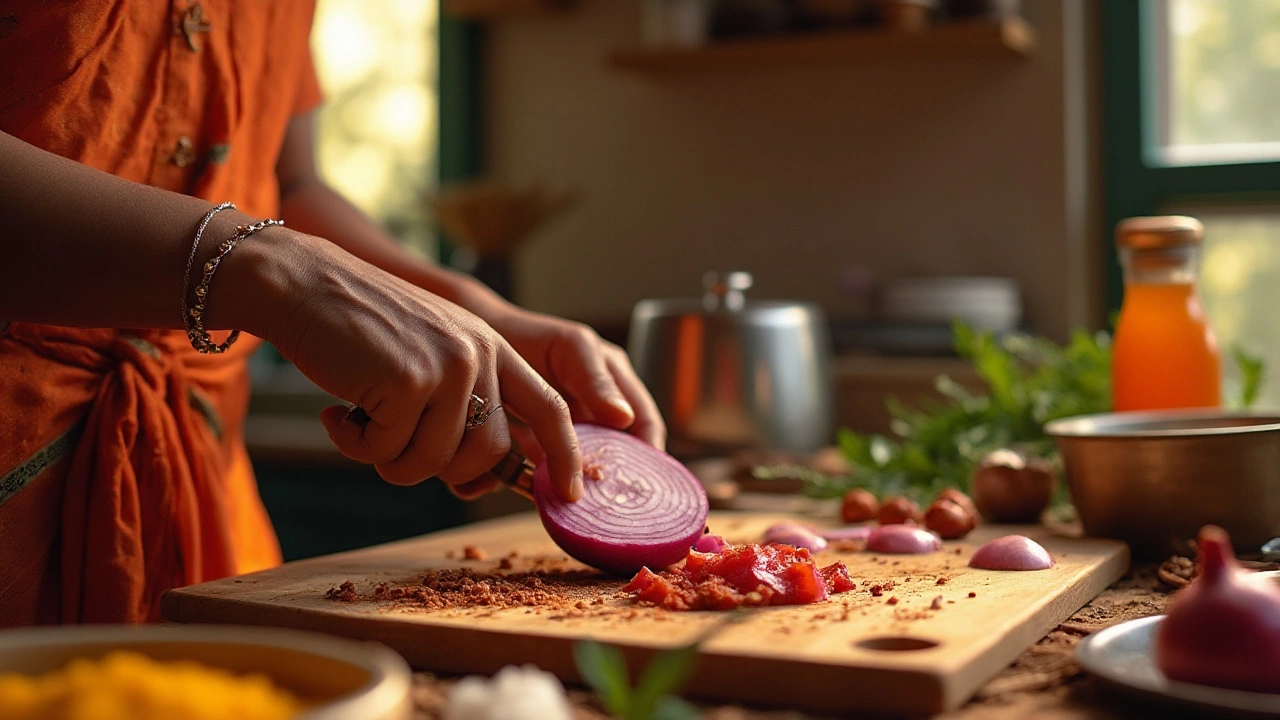Curry Preparation: Mastering the Art of Indian Curries
When working with Curry Preparation, the step‑by‑step process of building flavorful Indian sauces using spices, herbs, and base ingredients. Also known as curry making, it relies on balancing heat, aroma, and texture to create a dish that sings in every bite.
At the heart of every good sauce lies curry ingredients, the spices, herbs, and aromatics that define the flavor profile. From whole cumin seeds to ground coriander, each component adds a layer of depth. Curry preparation also often aims for a creamy curry, a silky texture achieved with yogurt, coconut milk, or cashew paste. The choice of thickener changes the mouthfeel and can turn a simple gravy into a luxurious sauce.
Key Elements of Curry Preparation
First, you need a solid base – typically onions, ginger, and garlic sautéed until golden. This trio creates the foundation that carries the heat of the spices. Next comes the spice blend. If you’re out of turmeric, you can still craft a vibrant sauce using turmeric substitute, alternatives like saffron or a pinch of paprika that mimic color and earthiness. Finally, the liquid component—water, stock, or dairy—brings everything together. The ratio of liquid to solids determines whether the curry stays thick or becomes a soup‑like broth.
One hotly debated element is the use of tomatoes in curry, whether fresh or canned, they add acidity and a subtle sweetness that can brighten the dish. Some regional styles prefer a tomato‑free approach, relying on tamarind or yogurt for tang. Understanding when to add tomatoes—usually after the spices have toasted but before the final simmer—helps you avoid a soupy texture and keeps the flavors balanced.
Timing matters too. A common semantic triple is: "Curry preparation requires proper heat control." Too high a flame burns the spices, too low a flame dulls them. The rule of thumb is to start high to sear the aromatics, then reduce to medium‑low for the simmer. This method preserves volatile oils while allowing the sauce to thicken naturally.
Another triple: "Curry ingredients influence the final texture and flavor." For instance, adding a splash of cream late in the cooking process prevents curdling and adds richness. Similarly, a handful of fresh cilantro at the end injects a bright, herbal note that elevates the entire dish.
Cooking equipment also plays a role. A heavy‑bottomed pan distributes heat evenly, reducing the risk of scorching the spice base. Using a Dutch oven or a thick cast‑iron pot can make the simmer more consistent, which is especially helpful when you’re aiming for a smooth, creamy curry
Now that you’ve got the fundamentals—base aromatics, spice blend, liquid balance, and optional thickening agents—you’re ready to experiment. Try swapping coconut milk for almond milk for a nutty twist, or toss in a dash of fenugreek leaves for a hint of bitterness. Each tweak teaches you how the pieces fit together, turning a single recipe into a toolbox of techniques.
Below you’ll find a curated list of articles that dive deeper into each of these topics. From classic dish definitions to the science behind lemon in biryani, the posts will give you actionable tips you can apply to your next curry night. Happy cooking!

Perfectly Sliced Onions for Flavorful Chicken Curry
Discover how to skillfully cut onions to enhance the flavor of your chicken curry. Understanding the right technique can transform your dish, bringing out a balance of sweetness and savoriness in your curry. Whether you're a home cook or a professional chef, knowing these tips will elevate your culinary skills. Find useful advice and interesting facts about onions, their types, and their ideal cuts for curry dishes.